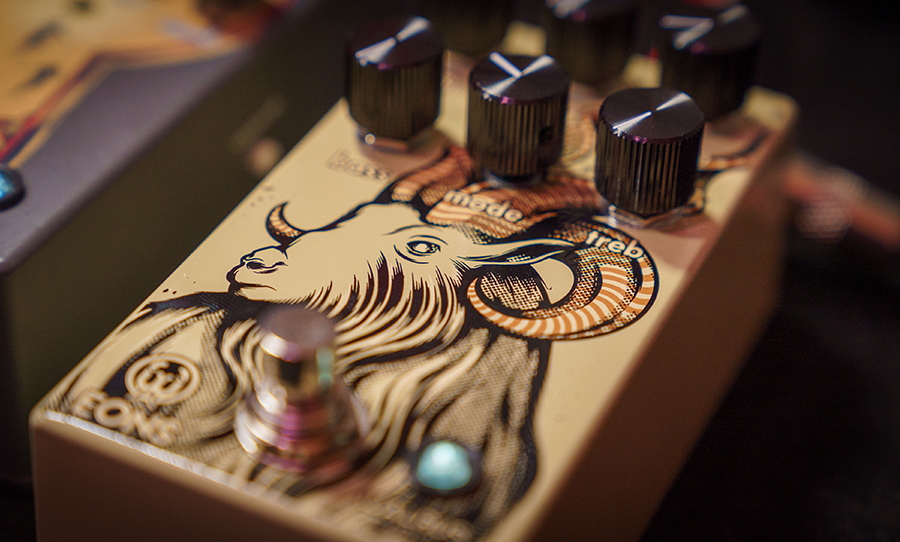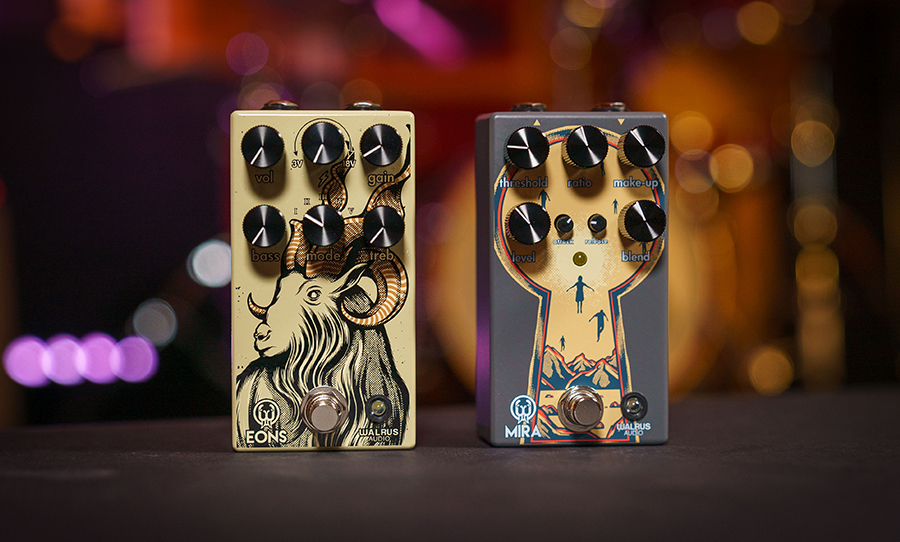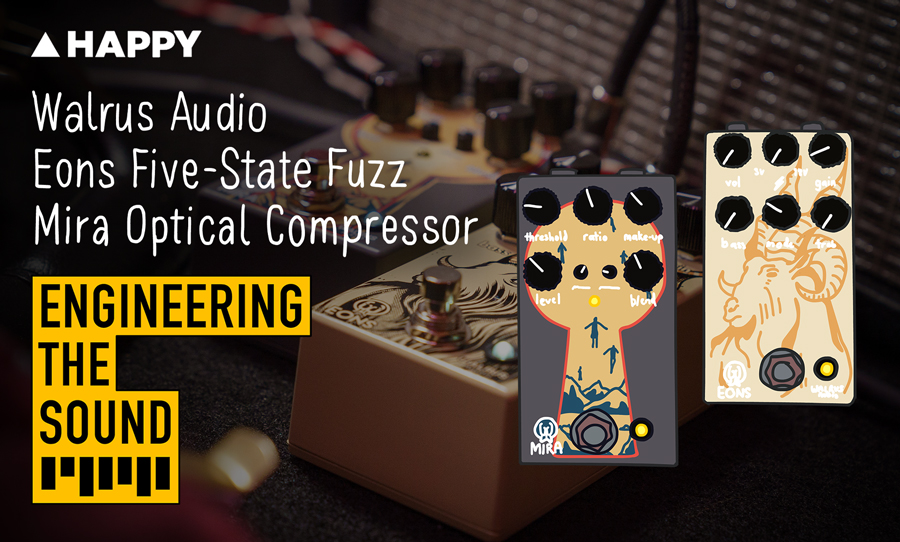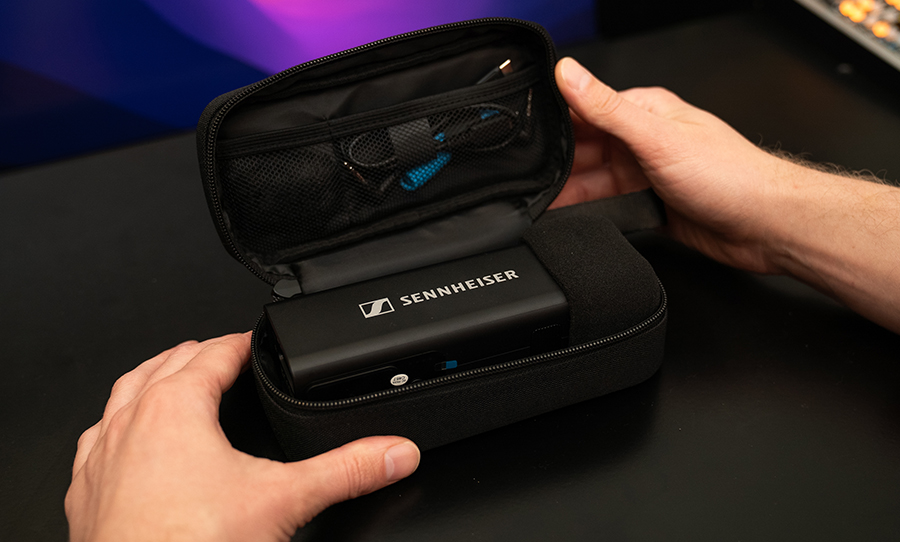When it comes to guitar effects fuzz is an instantly recognisable, classic sound, and a compressor is kinda one for the connoisseur; a piece you maybe didn’t realise you needed ‘til you plug the damn multi-knobbed mystery box in and notice how much more ‘expensive’ everything sounds.
These two units today are coming from Walrus Audio, a prolific boutique pedal company out of Oklahoma City USA that’s got most areas covered when it comes to effects pedals. They’ve been around for about 10 years and produced a huge range of effects, from distortions, fuzzes and overdrives to reverbs and delays, to amp simulators, EQs and compressors, to a wild world of modulation effects.
First appearing in sinister sonic commercial form in 1962, the 3-volt powered Maestro FZ-1 Fuzz-Tone drove the world bananas after it set ears upon future-degenerates The Rolling Stones’ 1965 hit riff track Satisfaction. This isn’t Walrus Audio’s first foray into the fuzz, but it’s their most encompassing with the Eons Five-State Fuzz boasting 5 different fuzz modes with more overall control than any vintage unit ever offered.
Master volume and gain are complemented with separate bass and treble controls, plus a mode switch and a voltage starve/gorge knob to widdle the electron flow down to 3 volts (reminiscent of the Maestro perhaps) for an extra-spattery experience, or pumped all the way up to 18 volts for extra fuzzy headroom.

Most importantly, the 5 switch-selectable fuzz modes are:
1 – Silicon clipping, one of the big two transistors used in fuzzboxes and the cause of arguments between pedal-philes across worldwide forums AND IRL. Is it better than germanium? Well in this box you can do that comparison yourself.
2 – Silicon clipping with a bass boost at the beginning of the circuit
3 – Germanium clipping. I busted this thing open and can’t spot a traditional germanium transistor on the modern surface mount PCB, but maybe it’s stashed on the rear. This thing is very cleverly arranged and I can’t rip it apart without a handful of tools.
4 – LED clipping diodes with a slight high cut
5 – LED and silicon clipping diodes combined with the silicon transistor.
All modes react distinctly and definitely sound different to one another – the silicon modes (1 & 2) are on the harsher spectrum (and that’s a good thing in fuzz terms), the germanium (3) is more mellow in comparison and somewhat unlike your traditional germanium fuzz, the LED clipping (4) is ‘fuller’ tone-wise, and the LED with silicon mode (5) is the extreme setting, with the most gain and a rounder body than any other selection.

Now, switching on the Mira Optical Compressor. It’s easy to see why the compressor is often overlooked. It’s a fairly misunderstood piece of studio equipment, usually due to its complicated nature (7 knobs) and subtle sound.
I suppose a compressor is a piece for the adults. But if you’re playing clean these things can be near-indispensable, or a great shortcut – you could practice everyday for hours to make your strumming and picking precisely consistent, or you could grab a compressor and near-instantly sound uniformly pluck-perfect.
The Mira is a silky, classy optical compression unit offering control over threshold, ratio (1:1 up to 20:1), attack, release, make-up gain, overall level, blend (aka a wet/dry control), with a side-switch high pass filter side chain to stop your low end triggering the compressor too early if you so wish. The box also features a handy gain reduction LED to show when compression is happening which escalates in luminescence as the gain reduction increases.
Compressors are cool; they’re kinda utilitarian and not the most exciting thing to talk about with children, but for the connoisseur it’s a nice subtle piece that will greatly shape your sound, and give it a smooth classiness that is pretty damn hard to reach without aeons of solitary rehearsal.

The Walrus Audio Eons Five-State Fuzz retails for AU$359, and the Mira Optical Compressor for AU$379. Both require 9V negative-tip power supply (suggested to be isolated as I imagine they suck a reasonable amount of juice and will max out your daisy chain), come in a pedalboard real estate-friendly 125B-style box with top-mounted jacks with soft-touch footswitches, and are available at all good places where you fulfil your pedal-buying urges.
For more details head over to Walrusaudio.com.



